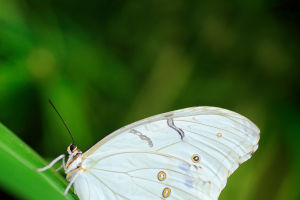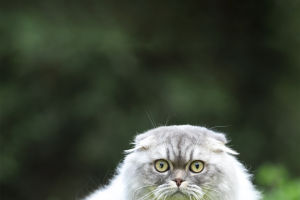There are more than 130 species of owls in total. The owl has a broad head, a short and stout bill, and a hooked front end. The feathers on the front of the head are arranged in a face plate, and some species have ear-like feathers. The face plate and ear feathers make the owl's head very similar to that of a cat, so it is commonly known as an owl.
Its plumage is mostly brown, scattered with fine spots, dense and soft, and it is silent when flying. Owls come in different shapes and sizes. Large ones, such as the eagle owl, can reach 90 centimeters in length, while smaller ones, such as the oriental horned owl, are less than 20 centimeters long. Female owls are generally larger than males.
The owl is one of the most widely distributed birds in the world. Owls can be seen all over the world except in the Arctic.
Most owls inhabit trees, some species inhabit rocks and grass. The vast majority of owls are nocturnal animals, nocturnal, and are not easy to see during the day when they hide in groves or eaves of trees. However, some species, such as the spotted-headed owl, the small owl with vertical stripes and the eagle owl, also often go out during the day.
Owls, as nocturnal animals, can keenly spot their prey no matter how dark the night is. The feathers are very soft, and they make so little noise when flying that most mammals don't notice it. It can also adjust the direction of the attack according to the noise generated by the movement of the prey, and control the enemy with the last claw. However, owls also have drawbacks. Owls are naturally colorblind and cannot distinguish the colors of nature.
Owls are also the only birds that cannot distinguish colors. Colors cannot be discerned because there are no cone cells in the retina. With the exception of owls, many birds have a sense of color. For example, crows fly high and need to find a place to land, and color will help them judge distance and shape. Also because of their color sense, they are able to catch bugs flying in the air and then land gently on branches. Birds' ability to distinguish colors also helps them find mates.
The number of auditory nerve cells in owls is several times that of other birds. They can even identify nearby movements by the different perceptions of sound in their left and right ears. This is also the skill they rely on to hunt at night.
We all know that owls can turn their necks a lot, even 270 degrees, but they are forced to do so. The eyes of owls are firmly fixed in the sockets and cannot be turned, so they need to turn their necks a lot to understand the situation around them at any time.
Owls are usually paired with a male and a female. The breeding season of owls is generally from March to June, and some species start breeding earlier in January. Except for a few species, owls do not build nests during the breeding process, but use tree cavities, rock burrows, or other suitable abandoned nests for birds to incubate their young. Owls lay a variable number of eggs in a litter, with larger species laying fewer eggs, while smaller species usually lay more eggs. The hatching period of the eggs is about one month. Incubating eggs is generally done only by females, while brooding is shared by males and females.


